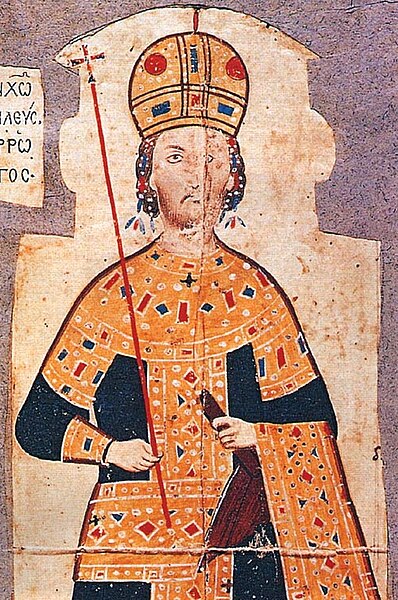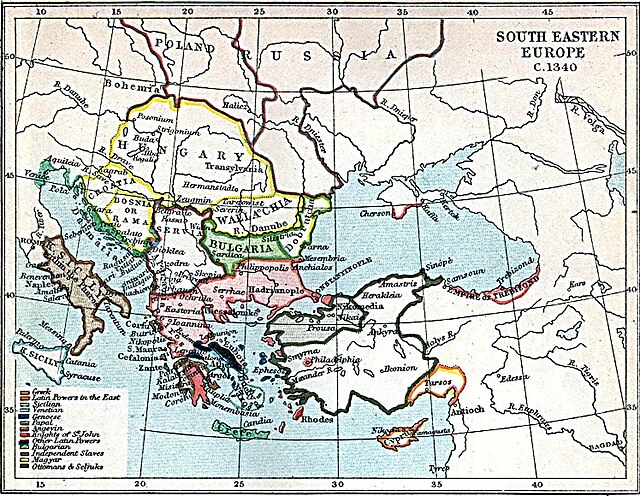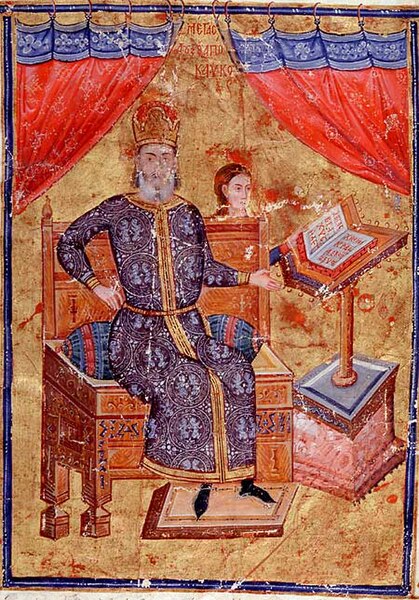John V Palaiologos or Palaeologus was Byzantine emperor from 1341 to 1391, with interruptions. His long reign was marked by constant civil war, the spread of the Black Death and several military defeats to the Ottoman Turks, who rose as the dominant power of the region.
Restored mosaic of John V Palaiologos in the eastern arch of Hagia Sophia.
Byzantine civil war of 1341–1347
The Byzantine civil war of 1341–1347, sometimes referred to as the Second Palaiologan Civil War, was a conflict that broke out in the Byzantine Empire after the death of Andronikos III Palaiologos over the guardianship of his nine-year-old son and heir, John V Palaiologos. It pitted on the one hand Andronikos III's chief minister, John VI Kantakouzenos, and on the other a regency headed by the Empress-Dowager Anna of Savoy, the Patriarch of Constantinople John XIV Kalekas, and the megas doux Alexios Apokaukos. The war polarized Byzantine society along class lines, with the aristocracy backing Kantakouzenos and the lower and middle classes supporting the regency. To a lesser extent, the conflict acquired religious overtones; Byzantium was embroiled in the Hesychast controversy, and adherence to the mystical doctrine of Hesychasm was often equated with support for Kantakouzenos.
Emperor Andronikos III, who supervised the last period of recovery of the Byzantine state.
The Byzantine Empire and its neighbouring states in 1340.
Donor portrait of the megas doux Alexios Apokaukos, one of the leaders of the anti-Kantakouzenos regency.
The Serbian Tsar Stefan Dušan, who exploited the Byzantine civil war to greatly expand his realm. His reign marks the apogee of the medieval Serbian state.





